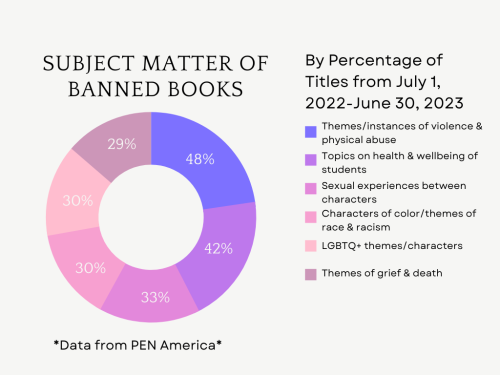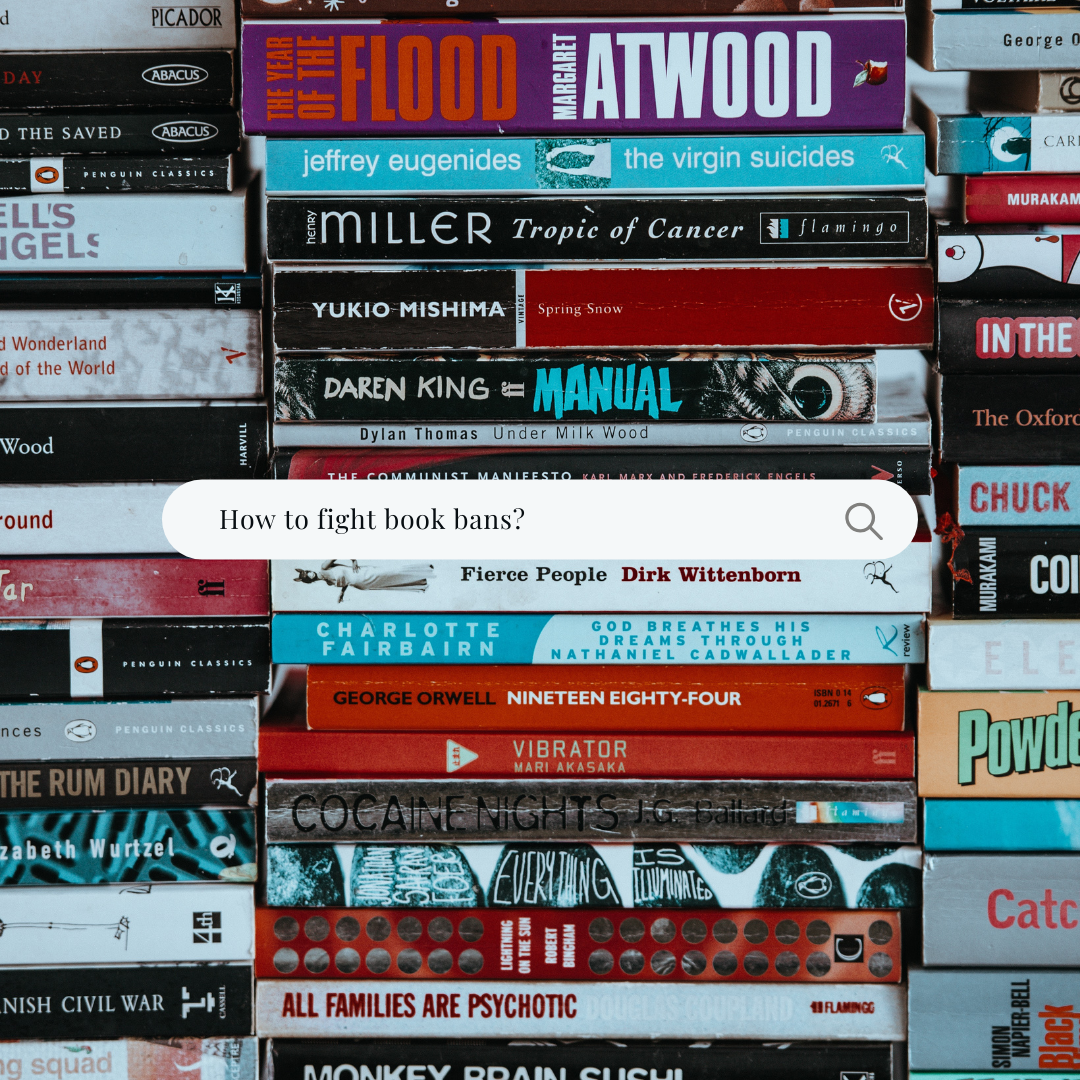The issue of book banning can feel far away from those in the bubble that is higher education. In reality, these challenges are right in Susquehanna’s backyard.
The Problem in Pennsylvania
According to data collected by PEN America for the 2022-2023 school year, Pennsylvania has the fourth most book bans in the country, with 186 bans. The state is trailing behind Florida with 1,406 bans; Texas, who has 625 bans; Missouri with 333; and Utah, which has 281 bans.
So, how does this impact SU? The 2022-2023 Susquehanna University Fact Book reports that out of the 2,206 students, 1,406 are from Pennsylvania, meaning there could be current or future SU students that were impacted by book bans while in high school.
Here is the current list of school districts with banned books in Pennsylvania:
- Central York School District
- Downingtown Area School District
- East Stroudsburg Area School District
- Eastern Lancaster County School District
- Elizabethtown Area School District
- Fairview School District
- Franklin Regional School District
- Kutztown Area School District
- North Penn School District
- Pennridge School District
- Wissahickon School District
What is Book Banning?
When it comes to restrictions on literature, there are two different terms to be aware of: banning vs challenging. Book challenges are the first step towards a complete ban. This is when a person or a group proposes the removal of a book, which is then reviewed by school officials to decide whether to remove it completely, otherwise known as a ban.
There are several reasons a book may be challenged or banned, the most common being that there is content deemed inappropriate for children. The Office of Intellectual Freedom reported that the top three reasons for challenges are the material was considered sexually explicit, the material contained offensive language, or the material was unsuitable for any age group.
These reasons seem rather broad, so what kind of content is currently under attack?
According to PEN America, books containing violent themes are at the forefront of these bannings, with topics on health and wellbeing of students trailing directly behind. The group also lists some common titles being banned, like Tricks by Ellen Hopkins and The Bluest Eye by Toni Morrison.

The implications of these bans are monumental to LGBTQ+ youth and parents. By deeming any gay or transgender content as “sexually explicit,” school boards are insinuating that this entire community is a threat to students. Meanwhile, many kids and their families identify as LGBTQ+, therefore labeling them as a threat to their peers. This not only perpetuates harmful stereotypes, but also teaches students that being gay or transgender is wrong. Overtime, this can alter a student’s perception of themselves and lead to mental health issues. LGBTQ+ youth already have high suicide rates, which could be exacerbated by these types of bans.
Banning books that delve into issues of race and racism can also harm students. This comes in the form of erasing history. One author that appears often on PEN America’s list of banned books is Toni Morrison, whose work is riddled with personal accounts of racism she faced growing up in the south. By removing these books from libraries, schools are keeping students from learning about a crucial part of American history.
Urgency of the Issue
According to the American Library Association (ALA), 2022 had the highest recorded number of book bans since the organization began collecting data related to library censorship nearly 20 years ago. So far in 2023, there have been reportedly 1,915 demands to censor library materials, which is a 20% increase from 2022.
With book bannings on the rise, how can SU work to combat this issue?
Possible Solutions
Although Susquehanna University is not experiencing any major book challenges, that does not mean the university should refrain from using its resources to help those that are impacted.
One potential solution is to have professors offer classes based solely around banned books, which could be offered to both SU students and high school students nearby that may have been impacted by previous book bans.
This solution was utilized when a Tennessee school board banned the graphic novel Maus from its middle school curriculum claiming mild profanity and one nude scene made the book inappropriate for children. Upon hearing this news, Scott Denham, a professor of German studies at Davidson College, decided to create a free course for these students focusing on the history of Holocaust narratives.
Another common solution is the creation of banned book clubs for university or local high school students. In Kutztown, one eighth grader formed this club so her peers could have the opportunity to read and discuss books that were being challenged both in their school district and others across the country.
Finally, the Blough-Weis Library could use its online records and databases to curate an online resource geared towards the sharing of banned books. Therefore, it could be distributed to students across the state and nation to allow them the opportunity to access these banned materials.
Although these solutions may seem small compared to the multitude of bans, any form of education and awareness can help in the fight to end literary censorship.

You must be logged in to post a comment.